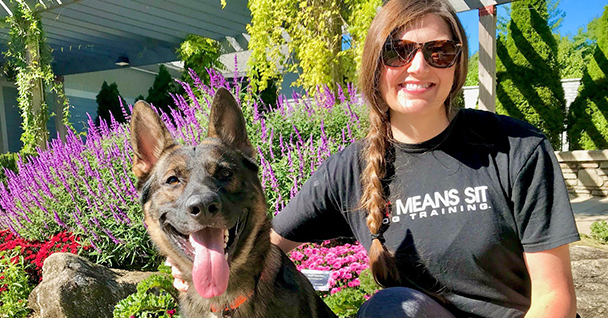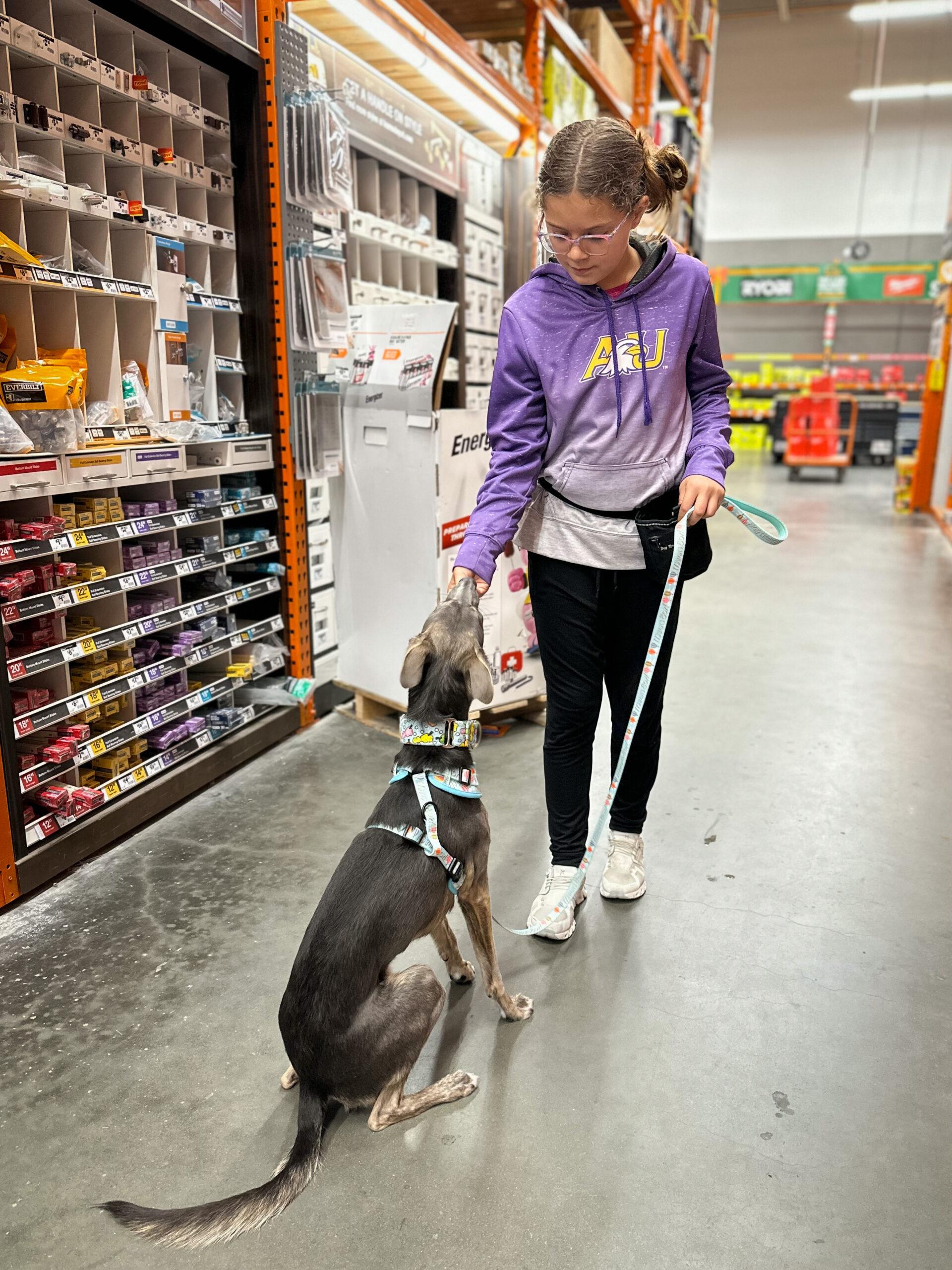Vital Tips for Successful Dog Training: An Overview for Family Pet Owners
Efficient dog training is a complex procedure that calls for a critical strategy customized to both the pet dog's temperament and the owner's purposes. Key parts such as establishing constant commands, using favorable reinforcement, and helping with very early socialization play critical functions in fostering a well-adjusted canine friend. Many pet proprietors run into difficulties that can impede progression, leading to stress and uncertainty. Understanding exactly how to navigate these challenges can substantially improve the training experience, inevitably transforming the connection between proprietor and dog. What are the necessary methods that can be used to guarantee success in this undertaking?
Recognizing Dog Behavior
Comprehending canine behavior is crucial for effective training and fostering an unified relationship in between dogs and their proprietors. dog training. Canines interact primarily through body language, articulations, and activities, making it essential for proprietors to analyze these signals properly.

Socialization plays a substantial duty in pet dog habits; direct exposure to numerous settings, individuals, and other animals can considerably influence a pet dog's character. In addition, elements such as type attributes and specific character must lead training approaches, as some breeds may have specific behavior traits that require customized techniques. By comprehending these elements, owners can create an encouraging atmosphere that encourages favorable actions, causing successful training outcomes and a much deeper bond with their family pets.
Developing Regular Commands
Efficient interaction with your canine begins with establishing consistent commands. This fundamental element of training is important for promoting understanding in between you and your pet dog. Uniformity in the commands you utilize guarantees that your pet can reliably connect particular words or phrases with the desired habits.
When selecting commands, select clear, distinct words that are easy to separate and state from each other. Avoid making use of similar-sounding commands that might confuse your canine. For instance, making use of "rest" and "stay" is ideal, yet "rest" and "struck" could cause misconceptions.
Furthermore, maintain the exact same tone and volume for each command. Pet dogs are sensitive to vocal signs, so varying your tone can develop complication.
It is similarly vital to ensure that all member of the family get on the very same page regarding the commands utilized. A united front in command use will certainly prevent mixed signals and reinforce the knowing process.
Positive Reinforcement Strategies
The power of positive support in canine training exists in its ability to urge wanted habits with incentives and appreciation. This technique is grounded in the concept that habits followed by favorable results are a lot more most likely to be repeated. By incorporating positive reinforcement right into your training program, you can efficiently shape your dog's habits in a useful manner.
To apply favorable reinforcement, it's important to identify what motivates your dog, whether it be treats, toys, or verbal appreciation. When your dog executes a wanted action, such as remaining on command, immediately compensate them with a treat or love. This association between the command and the positive result strengthens their understanding.
It's essential to timing the incentives properly; supplying the reinforcement within secs of the desired habits assists your dog make the link (dog training). Additionally, consistency is vital-- make certain that all family members use the very same commands and benefit systems to stay clear of complication

Slowly, you can lower the regularity of deals with as your pet discovers the actions, transitioning to commend or recurring incentives. This technique not only cultivates a solid bond between you and your pet dog but likewise promotes a favorable knowing atmosphere, making educating a satisfying experience for both.
Socialization and Communication
Continually exposing your pet to a selection of settings, individuals, and various other pets is essential for their social advancement. Socializing must begin early, preferably throughout the vital window of 3 to 14 weeks, when young puppies are most responsive to brand-new experiences. Older pet Check This Out dogs can additionally benefit from continuous socializing efforts.
Present your dog to various settings, such as parks, pet-friendly stores, and city areas. This direct exposure helps them adapt to different stimulations, decreasing anxiety and worry actions. Motivate positive communications with various other dogs and individuals, making sure that these encounters are controlled and risk-free to foster self-confidence.
Make use of organized playdates with genteel canines, as this can enhance your canine's social skills and show them proper behavior. Obedience classes and training sessions additionally supply exceptional possibilities for socializing, permitting your canine to engage with others in a supervised setting.
Monitor your canine's body language during interactions, as this will help you assess their convenience degree. Gradually enhance direct exposure to even more tough situations while making sure that each experience declares. A well-socialized pet is more probable to exhibit balanced habits, making them a happiness to have in any kind of setup.
Dealing With Typical Training Challenges
Every dog proprietor will come across training difficulties at some time, no matter their dog's age or socialization degree. Recognizing typical concerns such as my link stubbornness, distractions, and fearfulness can assist in developing reliable techniques for renovation.

Interruptions during training sessions can derail focus. To combat this, begin training in a quiet environment with marginal stimuli. Slowly introduce distractions as the canine becomes a lot more competent in commands. Short, regular training sessions are likewise reliable in preserving attention.
Fearfulness can impede a pet's discovering process. Progressive desensitization to the source of anxiety, matched with positive support, can assist relieve anxiousness. Patience is essential; never ever force a pet dog into a circumstance that causes distress, as this might great post to read worsen the concern.
Inevitably, understanding and attending to these typical challenges with a structured method will certainly cultivate a much more efficient training experience, enhancing the bond in between pet and proprietor while advertising effective learning.
Verdict
In recap, successful pet training relies on an extensive understanding of canine actions, the establishment of regular commands, and the application of favorable support techniques. Socializing plays a vital duty in establishing well-adjusted pet dogs, while resolving typical training difficulties requires persistence and versatility. By applying these crucial techniques, family pet proprietors can promote a strong bond with their pet dogs and promote desirable behaviors, ultimately bring about a harmonious relationship in between humans and their canine friends.
Recognizing pet dog behavior is essential for reliable training and promoting an unified connection between canines and their proprietors.Socializing plays a substantial role in dog habits; exposure to various atmospheres, individuals, and other animals can considerably influence a canine's character.The power of positive support in pet training exists in its capability to motivate wanted habits with rewards and praise. By integrating positive reinforcement into your training regimen, you can efficiently form your dog's behavior in a useful way.
In summary, successful dog training counts on an extensive understanding of canine behavior, the facility of regular commands, and the application of favorable support methods.
Comments on “The Ultimate Guide to Positive Reinforcement in Dog Training”